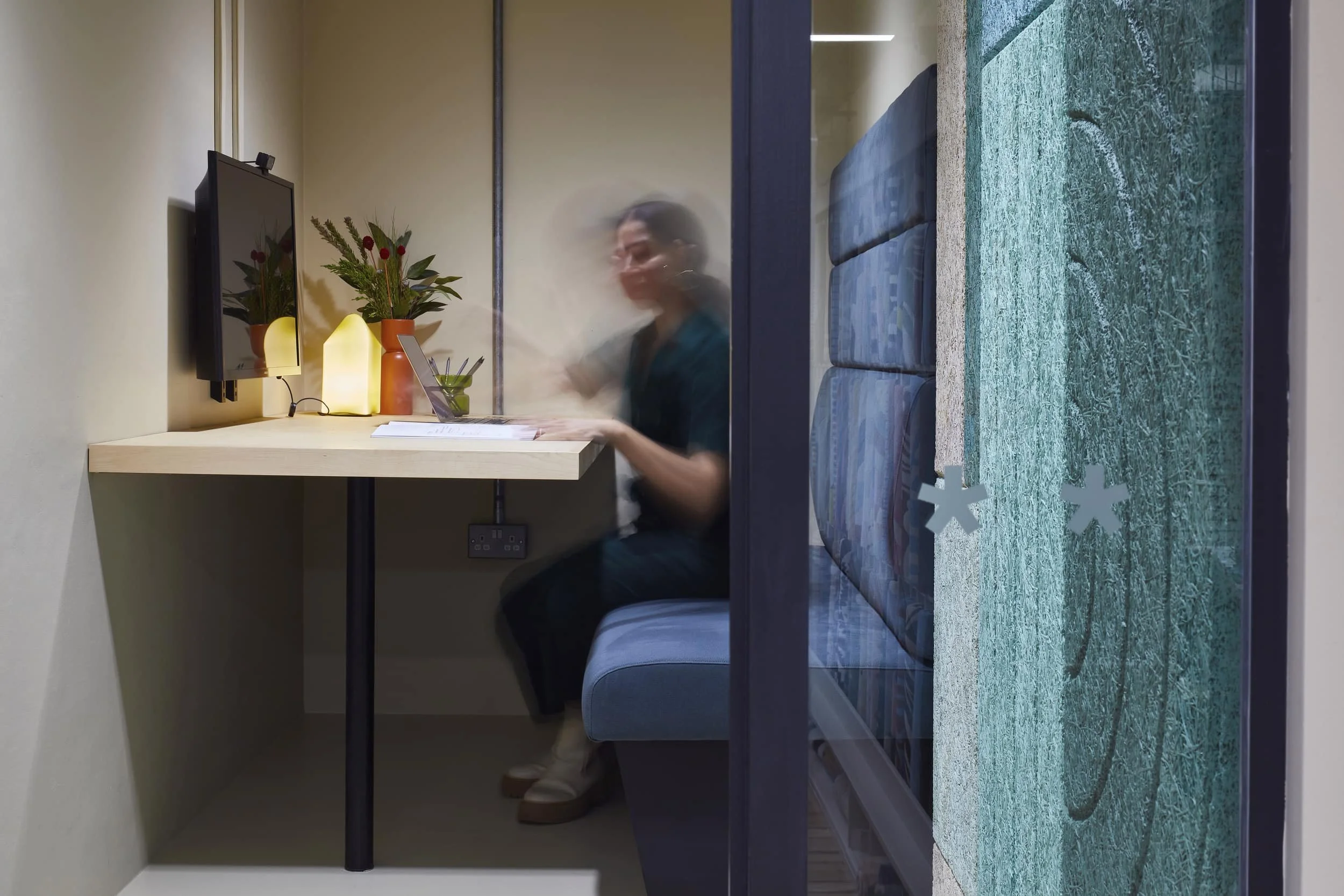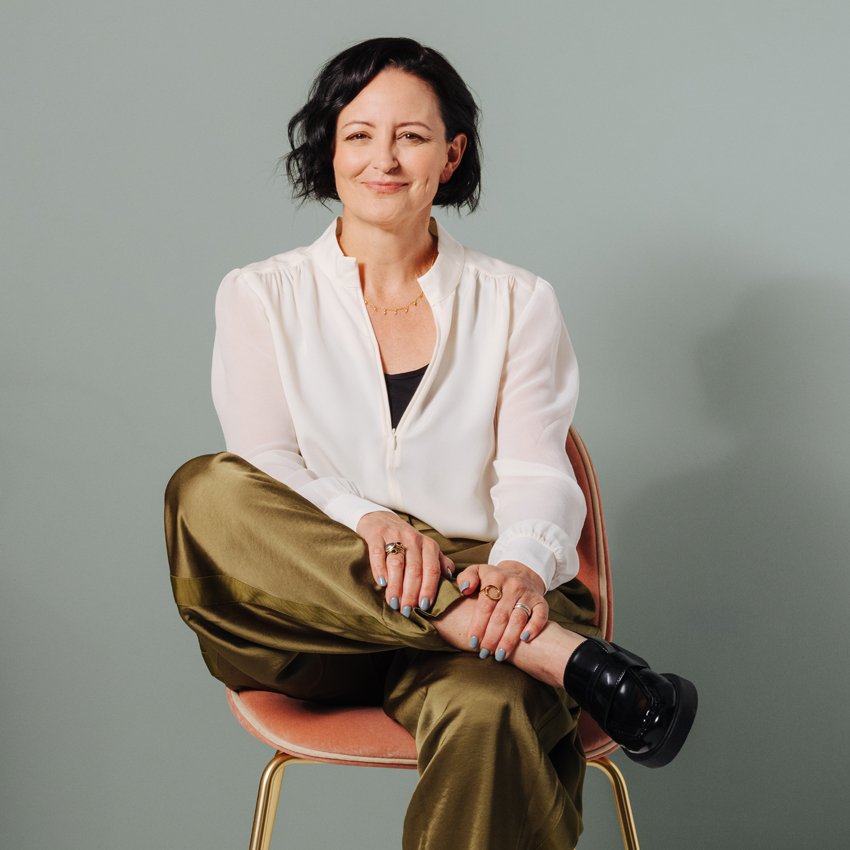Inclusive Design: Creating workspaces that support neurodiversity
The space at MVF offered various workplace sittings to accommodate different styles and needs within the workspace
Designing for inclusivity
We have always been acutely aware that open-plan offices can create health and productivity problems for many people. Noise, distractions and soullessness are all regular complaints where open plan is the only type of space on offer. For neurodivergent people the challenge of open plan is often intensified; According to BBC research, employees and visitors with neurodiverse conditions often process sounds, sights, and smells differently than other staff might.
At Trifle, we have always advocated for inclusive offices that have a full range of space-type to suit both the work that is being done and the person who is working there.
“Autistic people are canaries in the coal mine: our needs aren’t actually different from typical people’s, just more intense and specific,” says Kirsten Lindsmith, a blogger on autism.
Neurodivergent covers a range of conditions where cognitive experience differs.
The term includes autism spectrum condition, ADHD, dyslexia, dyscalculia, and dyspraxia. While each has its own unique attributes, people with neurodivergent conditions generally experience spaces differently than other members of the population.
Neuro-minorities comprise at least 15 to 20% of the world’s population. We are currently seeing an increase in the days people are expected to be in the office so whilst we cannot expect to replicate the comforts of home for everyone we do need to be considering how workspaces can better support everyone. Crowded noisy spaces are likely to add an unnecessary layer of stress.
Here are our top tips for designing a more inclusive workspace…
Private nooks are great for people who need to work in quieter spaces especially when combined with good acoustics and lighting
Offer Choice of where to work from
We recommend designing in a landscape of settings - different types of areas with differing levels of privacy, natural light and seating arrangement will allow for people to choose the space to work in that best suits their sensitivity levels on any given day. Whilst companies are keen to encourage collaboration (that we all so missed during the pandemic) it is of equal importance to offer quieter zones that offer low stimulation too. Include well being spaces that offer lower lighting, space to be tech free and spaces to relax and recharge. Ensure it is really clear how a space should be used so that it is clear to everyone.
Collaborative areas that offer some privacy will be welcomed by those who feel less confident in these situations and for those who get easily distracted.
This is not about building walls but using furniture or planting can be a great way to divide and zone space.
Comfortable Furniture
Consider the texture as much as you do the form when selecting furniture. Rough, scratchy, uninviting chairs will not appeal to many employees, particularly neurodiverse individuals with tactile sensitivity. Furniture can be a key communicator of how important employees' well being is so choose with consideration. How the furniture is arranged can also help facilitate a more productive as well as comfortable day. Phone pods are a great way to offer privacy without building rooms. Workstations can be positioned to offer privacy and natural light to some team members.
Air quality matters
Stuffy or smelly air can be especially troublesome for people with neurogenetic olfactory sensitivities such as those with autism. A sensitivity to smell in particular is called hyperosmia, and depending on the severity of the sensitivity, perfume or smelly lunch can trigger migraines, nausea - this can cause stress for people who may have worked at home being able to control their own environments. It’s imperative that companies do everything they can to limit intrusive smells by investing in high-performance HVAC equipment and maintenance to facilitate healthy air quality and circulation. Certain plants like palm plants, rubber plants and English ivy make great natural air purifiers. For especially pungent spaces like the kitchen, or even just the microwave, leaving a bowl of vinegar out overnight helps absorb other odours.
Don’t forget to change the image and describe it in alt text and add a caption here
Colour can help provide differentiation within spaces without being overwhelming
Light and Colour
We are big fans of using colour to change and uplift a space but it is important to keep in mind that for some too much can be overwhelming. We always recommend a mix of colours and tend to use paler tones in the main working areas. Many neurodiverse people, especially those with ADHD, are sensitive to bright, unnatural lighting and glare, as well as sudden movement. Incorporating more natural light throughout the space where possible can support everyone’s focus and mental wellbeing. Not every space will have windows that accommodate natural light, so in those instances mirrors, glossy surfaces, greenery, warm, soft LED lighting with adjustable settings, lighter colour palettes can help give the illusion of natural light. Dimmable lights and artwork with simple patterns can also help reduce stress.
Considerate Wayfinding
Many large work and community spaces can be overwhelming for people with cognitive differences if they are challenging to navigate. If the same visual clues are always used this can be tricky for people with dyslexia. We use colour, style and other visual landmarks to help differentiate one room/floor from another which offers more supported wayfinding.
By purposefully designing for the rich diversity of the workforce you can help ensure all your team members have access to space where they can thrive.
Author: Emma Morley, Director, Trifle*
Emma founded Trifle* in 2010 after a career in marketing, event design and production. Frustrated by the fact that only advertising agencies had inspiring spaces she had a desire to make good design the norm for all office workers. Emma has worked across well over 150 interior projects during her career at the helm of Trifle*, she remains passionate about making amazing spaces but also making the industry more accessible, more human and more diverse.





